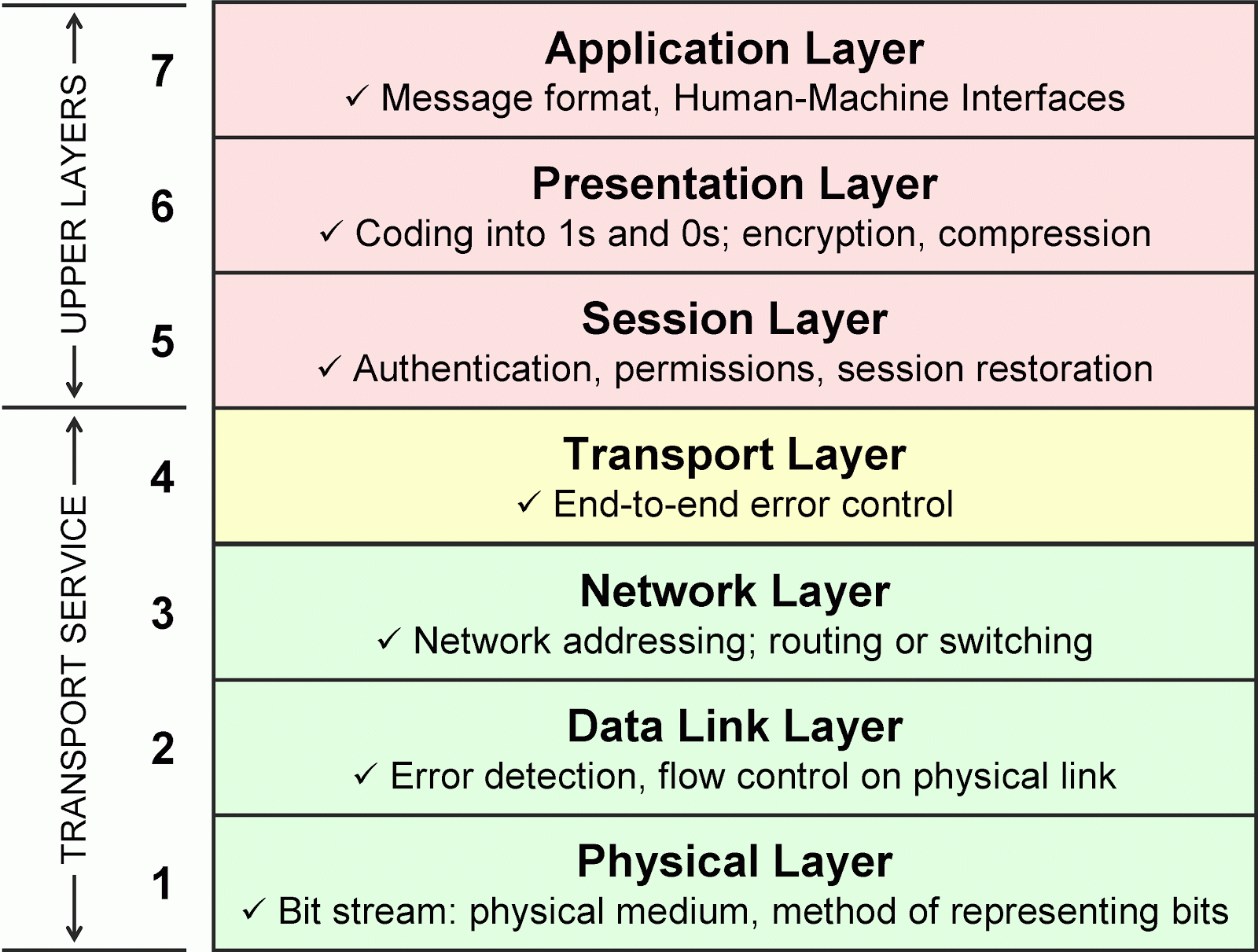Understanding the OSI Model: A Comprehensive Guide

Ever wondered how data travels seamlessly across networks, connecting devices worldwide? The Open Systems Interconnection (OSI) model is the key to understanding this complex process. It's a conceptual framework that breaks down network communication into seven distinct layers, each with its specific function.
Visualizing this layered architecture is often best achieved with an OSI model chart. A readily available OSI model chart PDF can provide a quick reference for understanding the roles of each layer, from the physical cables and signals to the applications we use every day. This model simplifies the complexities of networking, making it easier to diagnose issues and develop compatible network systems.
The need for a standardized model arose from the increasing complexity of network communication in the early days of computing. Before the OSI model, networks were often proprietary and incompatible with each other. The International Organization for Standardization (ISO) developed the OSI model in the late 1970s to address this interoperability issue. Its structured approach facilitates communication between different vendors' equipment.
A downloadable OSI model diagram PDF can be an invaluable tool for students, network engineers, and anyone seeking to understand network fundamentals. These charts provide a visual representation of the layers and their functions, often including protocols associated with each layer. This visual aid can simplify the learning process and provide a quick reference guide.
Understanding the OSI model's seven layers—Physical, Data Link, Network, Transport, Session, Presentation, and Application—is crucial for effective network troubleshooting. A well-structured OSI model chart PDF can help pinpoint the layer where a problem originates. This systematic approach streamlines the troubleshooting process and helps identify the root cause of network issues efficiently.
The OSI model, while primarily a conceptual framework, provides the foundation for many real-world networking protocols and technologies. Examples include Ethernet operating at the Physical and Data Link layers, IP (Internet Protocol) at the Network layer, and TCP (Transmission Control Protocol) at the Transport layer. HTTP (Hypertext Transfer Protocol), used for web browsing, operates at the Application layer.
One benefit of understanding the OSI model is its ability to isolate problems. If a network connection fails, knowing the OSI model helps identify which layer is likely causing the issue. Another benefit is that it promotes interoperability by providing a common standard for different network devices to communicate. Finally, the OSI model simplifies network design and implementation by breaking down a complex process into manageable layers.
Some challenges in applying the OSI model are that some protocols don't perfectly fit into a single layer, and the model can be overly abstract for certain practical applications. However, its value as a learning and troubleshooting tool remains significant.
Advantages and Disadvantages of Using an OSI Model Chart PDF
| Advantages | Disadvantages |
|---|---|
| Easy to access and share | May not always be updated with the latest protocols |
| Provides a visual representation for better understanding | Can be overwhelming for beginners due to the detail |
Best Practices for Using the OSI Model:
1. Use a clear and concise OSI model chart PDF.
2. Understand the function of each layer.
3. Relate the model to real-world protocols.
4. Use the model for troubleshooting network issues.
5. Continuously learn and update your knowledge of the OSI model.
Frequently Asked Questions:
1. What are the seven layers of the OSI model? Physical, Data Link, Network, Transport, Session, Presentation, and Application.
2. Why is the OSI model important? It provides a standardized framework for understanding network communication.
3. How can I use an OSI model chart PDF? As a visual aid for learning and troubleshooting.
4. What is the difference between the OSI model and the TCP/IP model? The OSI model is a conceptual framework, while the TCP/IP model is a practical implementation.
5. What are some examples of protocols used in each layer? Ethernet, IP, TCP, and HTTP.
6. What are some common troubleshooting techniques using the OSI model? Isolating the problematic layer and checking associated protocols.
7. Where can I find a good OSI model chart PDF? Search online for reputable networking resources.
8. How can I learn more about the OSI model? Through online courses, books, and practical experience.
In conclusion, the OSI model is a fundamental concept in networking, and a visual representation like an OSI model chart PDF is a valuable tool for anyone working with networks. It provides a framework for understanding how data flows across networks, helping in troubleshooting and design. While it may seem complex at first, grasping the basics of the seven layers and their functions unlocks a deeper understanding of how interconnected systems communicate. By utilizing available resources like OSI model diagrams and exploring real-world applications, you can master this essential networking concept and enhance your ability to manage and troubleshoot network systems effectively. Download a high-quality OSI model diagram PDF and start your journey to networking mastery today. Explore the wealth of information available online and begin applying your knowledge in practical scenarios for a comprehensive understanding of network communication.
Unlocking charm exploring benjamin moores cottage paint hues
Free printable christmas images a festive touch for the holidays
Unlocking the secrets of behr platinum gray the ultimate guide













